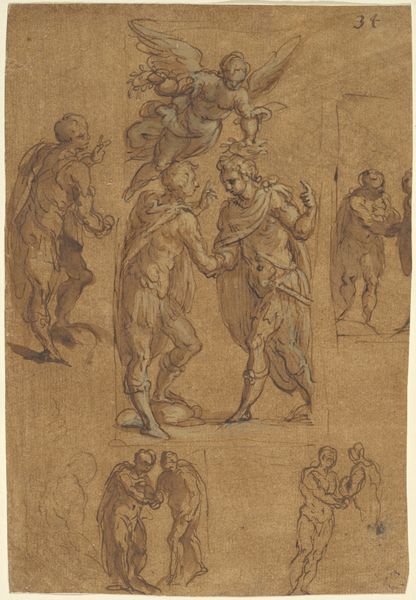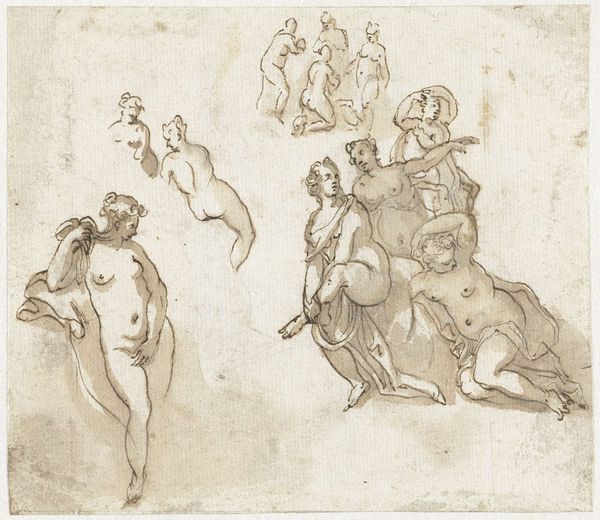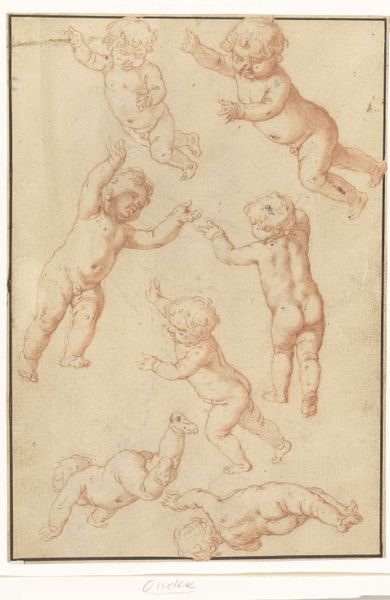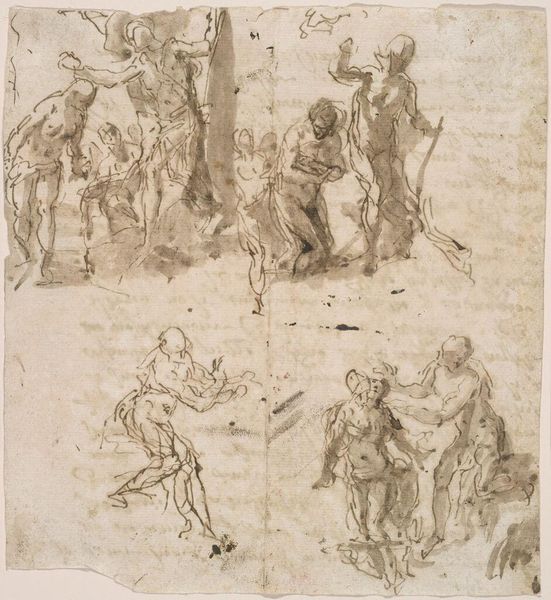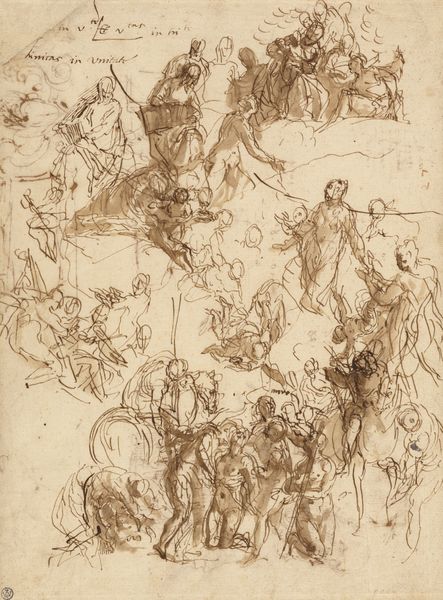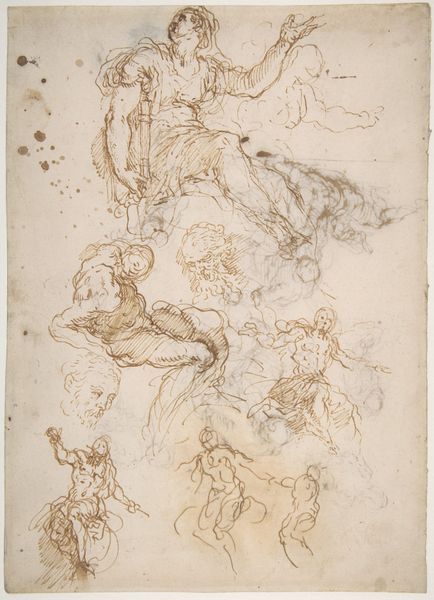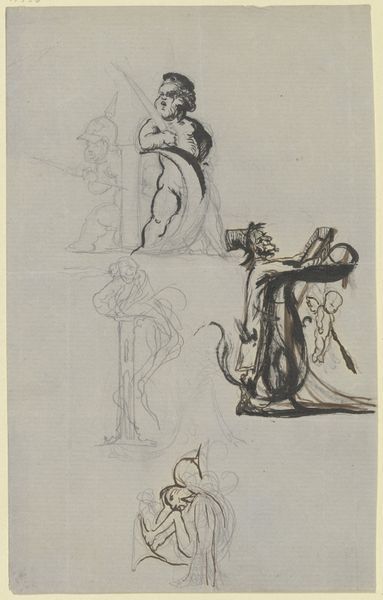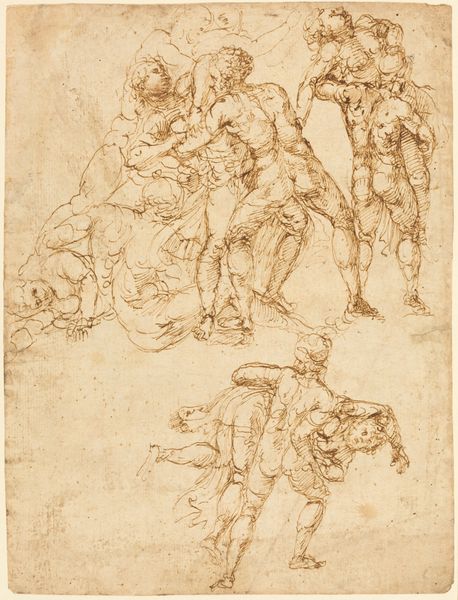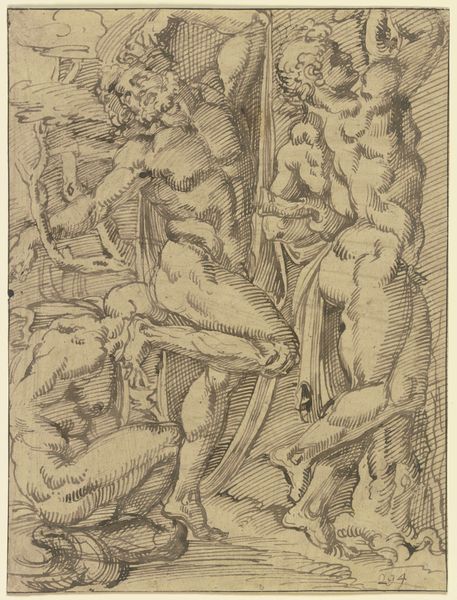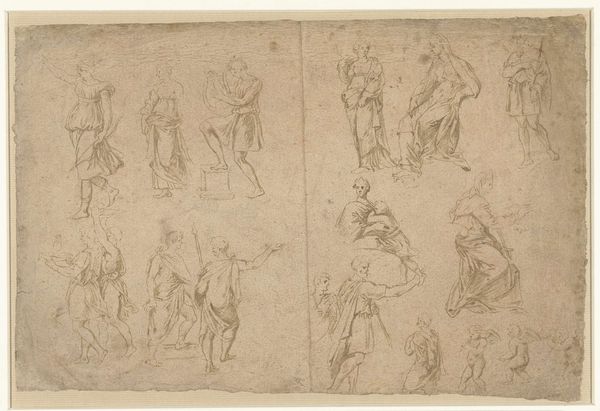
drawing, ink
#
drawing
#
narrative-art
#
ink painting
#
mannerism
#
figuration
#
ink
Copyright: Public Domain
Paolo Farinati rendered these studies for the Massacre of the Innocents with pen and brown ink in the 16th century. In this collection of sketches, the figures in motion convey the raw terror and brutality of the biblical event. Notice the repeated motif of the mother clutching her child, a symbol of the primal bond facing unimaginable threat. This echoes across centuries, from ancient depictions of mourning figures to modern war photography. Consider how the Italian Renaissance reinterprets classical gestures of grief, amplifying emotional intensity. The soldier’s raised sword, a symbol of power and death, finds its counterpart in countless battle scenes throughout art history. It's a visual shorthand for violence, stirring deep-seated fears and anxieties. These motifs tap into a collective memory, a shared understanding of human suffering that transcends time. It speaks to our deepest fears, engaging viewers on a subconscious level with the horror of infanticide. The cyclical recurrence of these symbols demonstrates how primal emotions resurface, transformed yet fundamentally unchanged, in each new era.
Comments
stadelmuseum about 2 years ago
⋮
The drawing served as a study for Farinati’s painting of the Massacre of the Innocents in S. Maria in Organo in Verona, completed in 1556. For this project the artist fashioned little wax and clay models (manichini) which he studied and sketched from all angles. In the process, however, he paid little attention to bodily structure and anatomy. Rather, Farinati experimented with the interplay between light and shade likewise found in the painting. The dramatic quality of the artistic expression and the consummation of the figural composition have thus been carefully rehearsed in the drawing.
Join the conversation
Join millions of artists and users on Artera today and experience the ultimate creative platform.
